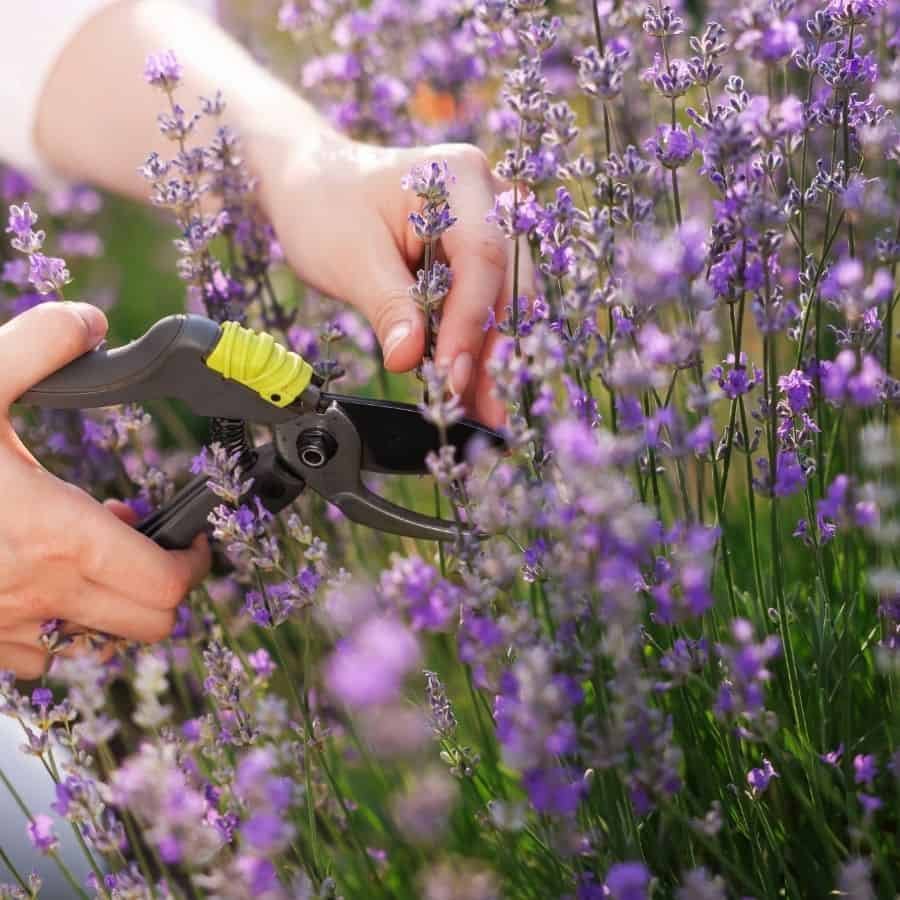Forget what you’ve heard about “leaving plants alone to do their thing.” Some herbs actually need regular attention and trimming to do their best.
After ignoring my herbs during my first two years of gardening, I learned that pruning makes a real difference.
A properly pruned herb can produce up to 3x more harvest throughout the season. Here are the herbs that really benefit from regular cuts.
Why Your Herbs Need Regular Trimming
Most herbs actually do better when you cut them regularly. Unlike that regrettable pandemic self-trim, herbs thrive when pruned.

Think of pruning like a workout for your plants. It encourages fresh growth and keeps flavors strong.
When left untouched, many herbs bolt quickly (garden-speak for “they flower, get bitter, and stop producing much”). Regular pruning prevents this and keeps your plants productive longer.
The difference between new and experienced gardeners is knowing when to snip. Just like you wouldn’t go months between haircuts, your herbs need regular maintenance, too.
The Pruning Basics: Your Guide to Better Cuts
• The Clean-Tool Rule: Always use sharp, clean scissors or pruners. Dirty tools spread disease.
• The Morning Method: Prune in the morning when essential oils are most concentrated for better flavor.
• The One-Third Law: Never remove more than ⅓ of the plant at once—herbs need time to recover from big cuts.
• The Waste-Not Approach: Compost trimmings or dry them for later use—your future soups will thank you.
The 9 Herbs That Need Regular Pruning
1. BASIL: The Flavor Keeper
Basil loses flavor when allowed to flower. Pinch just above leaf pairs to create a bushier plant with better harvest potential.
Those flower buds? They’re your plant’s signal that it’s ready to stop producing. Remove them right away to keep leaves tender and flavorful.
2. MINT: The Aggressive Grower
Mint spreads like crazy if you let it. Trim it back by a third every few weeks to keep it dense and stop it from taking over your entire garden.
Most people are too gentle with mint. This herb can handle aggressive pruning.
3. OREGANO: The Woody One
What matters most with oregano is giving it tough love. Without regular pruning, it goes from tender herb to woody stems faster than you’d think.
Cut back to about two-thirds height, especially before it flowers, for continuous harvests.
4. THYME: The Quick Woodifier
Thyme develops a woody, unproductive base faster than most herbs. Snip the top few inches regularly, but avoid cutting into old woody stems unless you’re ready for a complete plant makeover.
5. PARSLEY: The Base Grower
I was surprised to learn that parsley needs a different approach. Harvest outer stems at the base. Never just pluck leaves.
This triggers better regrowth and prevents the “bald spot” look that often happens otherwise.
6. ROSEMARY: The Tree Wannabe
Left unpruned, rosemary goes from herb to small tree pretty fast. Trim young, green stems often for bushier growth and avoid cutting into woody parts.
This Mediterranean native can live for decades with proper pruning. Some European specimens are over 50 years old.
7. SAGE: The Seasonal Shifter
Light pruning during the growing season keeps sage looking good and producing well. After flowering, cut back by about a third.
Your sage will reward you with fresh new growth instead of becoming the sprawling, leggy mess that happens to many herb gardens.
8. CHIVES: The Ground-Level Grower
Cut chives low, about 1-2 inches above the soil, to get fresh, tender shoots. The real trick with chives is pruning after flowering.
This prevents them from wasting energy on seed production and redirects it to new growth you can actually use.
9. CILANTRO (CORIANDER): The Fast Bolter
Cilantro bolts faster than almost any herb. Harvest early and often, cutting stems close to the base to delay flowering.
This quick-cycle herb needs the most strategic pruning of all. Every snip buys you extra time before it flowers and goes to seed.
How to Actually Cut Your Herbs
Unlike shrubs and trees that need heavy cutting, herbs need a lighter touch. Think of yourself as a plant sculptor. Each cut should be intentional and precise. Get up close, visualize where you want new growth, and trim with control.

Traditional pruning focuses on airflow and the removal of dead wood. Herb pruning is all about encouraging tender new growth—more like a refresh than major surgery.
Your Garden, Your Approach (But These Tips Really Help)
Don’t get too hung up on pruning perfection—herbs are pretty forgiving. Keep the basic guidelines in mind, time your trims right (usually before flowering for most herbs), and adjust as you learn.
With proper pruning, you’ll turn struggling herbs into productive plants that keep giving all season long.
Now grab those scissors—your herbs are waiting.

